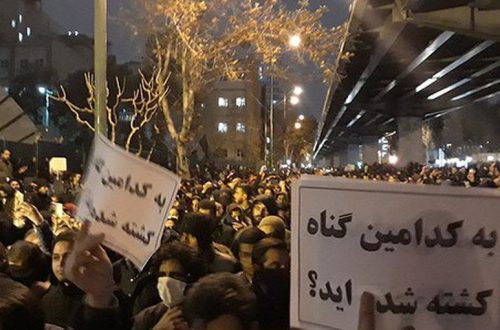This is a cross-post from Marc Goldberg
I’m confused by the Prime Minister’s words to the AIPAC Conference;
“We have to stop Iran’s nuclear enrichment program before it’s too late. Words alone will not stop Iran. Sanctions alone will not stop Iran. Sanctions must be coupled with a clear and credible military threat if sanctions fail.”
Isn’t it the credible military threat against Iran that has so far ensured that they haven’t yet been able to develop nuclear weapons? Oh I’m not talking about the threat from Israel’s Air Force, I’m talking about the threat from a whole range of angles that are surely the reason that the Iranians have so abjectly failed in their quest to obtain the bomb.
In 2010 there was almost a panic when it was reported that Iran was a mere month away from completing work on a nuclear weapon. The report was immediately dismissed by US Defense Secretary Robert Gates who said that ”I think that most estimates that I’ve seen, haven’t changed since the last time we talked about it, which is probably at least a year, and maybe more,” and almost exactly three years later we’re still hearing about how close Iran is to creating a nuclear weapon.
Article after article has related how close the Iranians are to developing the dreaded weapon and yet they still aren’t there. So have all of these experts, soldiers and politicians simply been wrong year after year as they come out into the public domain to tell us all that our deadly enemy is on the verge of getting their very own doomsday weapon only to be proven wrong by their own predictions failing to be proven correct?
In a word, NO. Something else is going on here, attacks on Iran that regularly make it into the press but somehow fail to make an impression on our collective memory.There has been story after story regarding the various obstacles that the Iranians have run into over the past few years vis a vis their nuclear programme. One that caught the attention of the world’s press for some time was the Stuxnet Virus which, according to the Christian Science Monitor (CSM), was attacking Iranian nuclear facilities as early as 2007.
The Stuxnet Virus was used to attack Uranium enrichment machinery in the Natanz plant and apparently did so successfully. According to CSM;
“Since Stuxnet’s discovery in 2010, security researchers have uncovered a handful of other sophisticated pieces of computer code they believe were developed in tandem to engage in espionage and warfare. These include Flame, Duqu and Gauss.”
Attacking Iran through the use of computer viruses isn’t the only method that has been employed. In an attack like something out of a Jason Bourne movie one Iranian nuclear scientist was assassinated while on his way to work. In November 2010 Majid Shahriari was killed by a bomb attached to the window of his car by a motorcyclist who then sped off. Shahriari was the second Iranian nuclear scientist to be killed in 2010 after Masoud Ali Mohammadi‘s assassination in January 2010. The killings didn’t stop there, Mostafa Ahmadi-Roshan was killed when his car blew up in January 2012 apparently also after a motorcyclist attached an explosive to it. The New York Times took a good look at the spate of assassinations in this article after Roshan’s death.
These assassinations were small potatoes compared to what happened next. On the eve of Israel’s General Election a massive blast wasreported to have occurred inside a nuclear facility built into a mountain in Iran. Roughly 200 workers were reportedly trapped inside the facility, the acting Minister of Defense at the time, Avi Dichter, said the following;
“Any explosion in Iran that doesn’t hurt people but hurts its assets is welcome.”
In 2009 the then Chairman of the US Joint chiefs of Staff, Admiral Mike Mullen, argued that Iran will have the bomb in ”one to three years, depending on assumptions about where they are right now. But they are moving closer, clearly, and they continue to do that.” Clearly that’s one assessment that never came into being, most likely because of the above attacks on Iran’s nuclear infrastructure.
These direct actions aren’t the only examples of military activity occurring concerning Iran. Just last month the Iranians declared that they had succeeded in hacking into a US drone that was downed on their soil. It is unlikely that the only drone the US has ever sent over Iran experienced mechanical complications, far more likely is that such overflights have become routine. This little nugget from USA Today provides a hint to just that state of affairs;
“After initially saying only that a drone had been lost near the Afghan-Iran border, American officials eventually confirmed the plane was monitoring Iran’s military and nuclear facilities. Washington asked for it back but Iran refused, and instead released photos of Iranian officials studying the aircraft”
Now the flip side to all of this activity is the very vocal resistance that Israeli intelligence and military commanders have had to an all out military strike on Iran. Former Mossad chief, Meir Dagan, has beenespecially vocal on this topic. In light of the fact that Israel lacks the capability to destroy Iran’s nuclear programme through conventional means an unconventional approach would be the only option left for Israel to take. Furthermore, judging mainly by the fact that every assessment on the timetable for the Iranian nuclear programme has so far been proven incorrect through the simple passage of time, this unconventional option seems to be working pretty well.
So when I hear someone calling for a military attack against Iran, or when the Prime Minister talks of the ‘Military threat’ I find it all to be a bit irrelevant since Iran is already the subject of continual military operations. Operations that appear to be working very well indeed. With this in mind surely the military strikes are already happening, just not in the form that we expected them to take.


